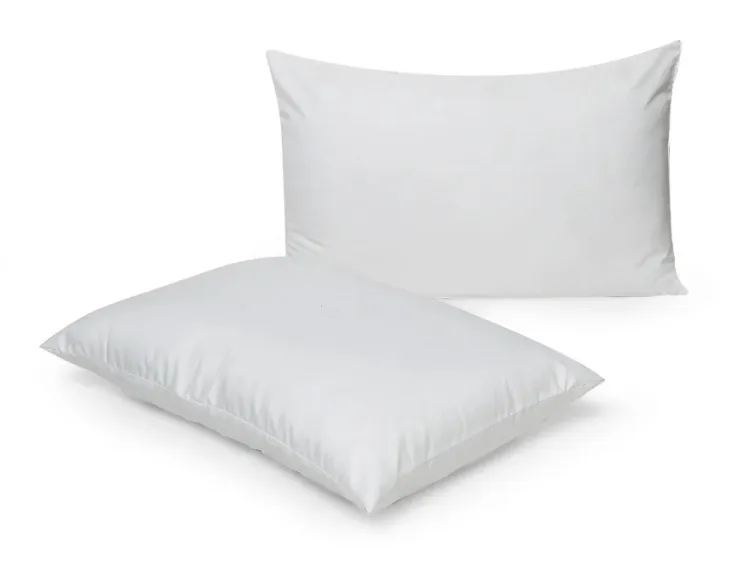From Ancient Stone to Modern Comfort: The Evolution of Pillows...!!!
Pillows are essential fixtures in our lives, providing comfort, support, and aesthetic appeal. With a wide range of types, materials, and health benefits, finding the right pillow can significantly enhance sleep quality and overall well-being.

Pillows are essential companions in our everyday lives, providing comfort and support for restful sleep, enhancing the coziness of our living spaces, and serving decorative purposes. Their history, types, materials, and health benefits are extensive and diverse, highlighting their importance and versatility.
History of Pillows
The use of pillows dates back to ancient civilizations. The earliest known pillows were used by Mesopotamians around 7,000 BC and were made of stone. These stone pillows were designed to keep the head elevated and prevent insects from crawling into the ears, nose, or mouth during sleep. Ancient Egyptians also used pillows, often made of wood or stone, and considered them symbols of status and protection.
In ancient China, pillows were made from various materials, including wood, stone, bamboo, and porcelain. These pillows were often intricately decorated and believed to promote good health and prosperity. The Greeks and Romans later introduced softer pillows stuffed with materials like feathers, straw, and reeds, setting the stage for the modern pillow.
Types of Pillows
Pillows come in various shapes, sizes, and types, each designed to serve different purposes:
-
Bed Pillows: These are the most common type of pillows, used for sleeping. They come in standard, queen, and king sizes and are available in various firmness levels to suit different sleeping preferences.
-
Body Pillows: Long and cylindrical, body pillows provide support for the entire body, making them ideal for side sleepers and pregnant individuals who need extra support for their back and abdomen.
-
Orthopedic Pillows: Designed to provide specific support for different parts of the body, such as the neck, back, and knees, they help maintain proper alignment and relieve pressure points, reducing pain and discomfort.
-
Decorative Pillows: Also known as throw pillows or accent pillows, these pillows enhance the aesthetic appeal of a room. They come in various shapes, sizes, and colors and are often placed on sofas, chairs, and beds.
-
Travel Pillows: Small and portable, travel pillows provide comfort and support during travel. They often have a U-shape to support the neck and prevent discomfort during long journeys.

Materials
The comfort and support provided by a pillow largely depend on the materials used. Common pillow fillings include:
-
Down and Feather: Down pillows are filled with the soft undercoating of birds, usually ducks or geese, while feather pillows use the outer feathers. Down pillows are known for their softness and insulation, while feather pillows offer more support and are more affordable.
-
Memory Foam: Memory foam pillows contour to the shape of the head and neck, providing excellent support and pressure relief. They are ideal for individuals with neck or back pain.
-
Latex: Latex pillows are made from natural or synthetic latex. They are resilient, hypoallergenic, and offer good support and breathability.
-
Polyester: Polyester-filled pillows are affordable and easy to maintain. They come in various firmness levels and are suitable for those with allergies, as they are hypoallergenic.
-
Buckwheat: Buckwheat pillows are filled with buckwheat hulls, providing firm support and good airflow. They can be adjusted to achieve the desired level of firmness and support.
-
Gel: Gel pillows incorporate gel layers or infusions to provide cooling and support. They help regulate temperature and prevent overheating during sleep.
Health Benefits
Using the right pillow can offer numerous health benefits:
-
Improved Sleep Quality: A comfortable pillow can enhance sleep quality by providing the necessary support for the head, neck, and shoulders, reducing tossing and turning.
-
Reduced Pain and Discomfort: Orthopedic pillows and memory foam pillows can alleviate pain and discomfort by maintaining proper spinal alignment and relieving pressure points.
-
Allergy Relief: Hypoallergenic pillows made from materials like latex, polyester, and memory foam can reduce allergy symptoms by preventing the accumulation of dust mites and other allergens.
-
Enhanced Relaxation: Decorative and body pillows can create a cozy and inviting atmosphere, promoting relaxation and reducing stress.
Care and Maintenance
To ensure the longevity and hygiene of pillows, proper care and maintenance are essential. Most pillows come with care instructions that should be followed. Common practices include:
-
Regular Cleaning: Pillowcases should be washed regularly to remove dirt, oils, and allergens. Some pillows can be machine-washed, while others may require spot cleaning or professional cleaning.
-
Fluffing: Regularly fluffing pillows helps maintain their shape and support. Down, feather, and polyester pillows benefit from fluffing to distribute the filling evenly.
-
Replacement: Pillows should be replaced every 1-2 years, or when they lose their shape and support. Old pillows can harbor allergens and lose their effectiveness over time.
In summary, pillows are essential fixtures in our lives, providing comfort, support, and aesthetic appeal. With a wide range of types, materials, and health benefits, finding the right pillow can significantly enhance sleep quality and overall well-being. Proper care and maintenance ensure that pillows remain effective and hygienic, making them indispensable companions for restful nights and comfortable living spaces.
What's Your Reaction?

















